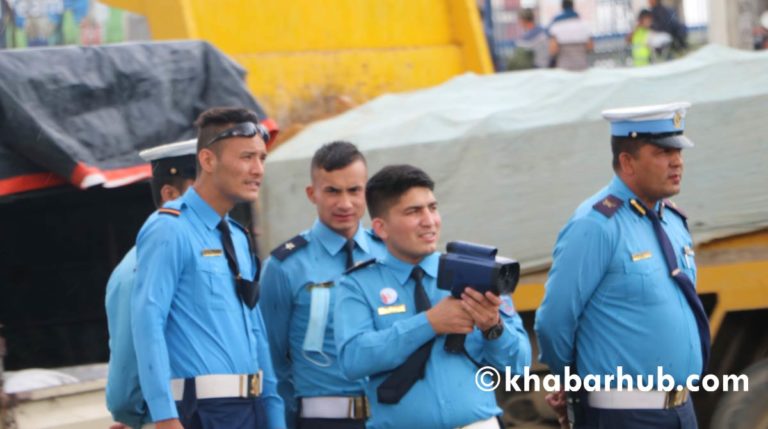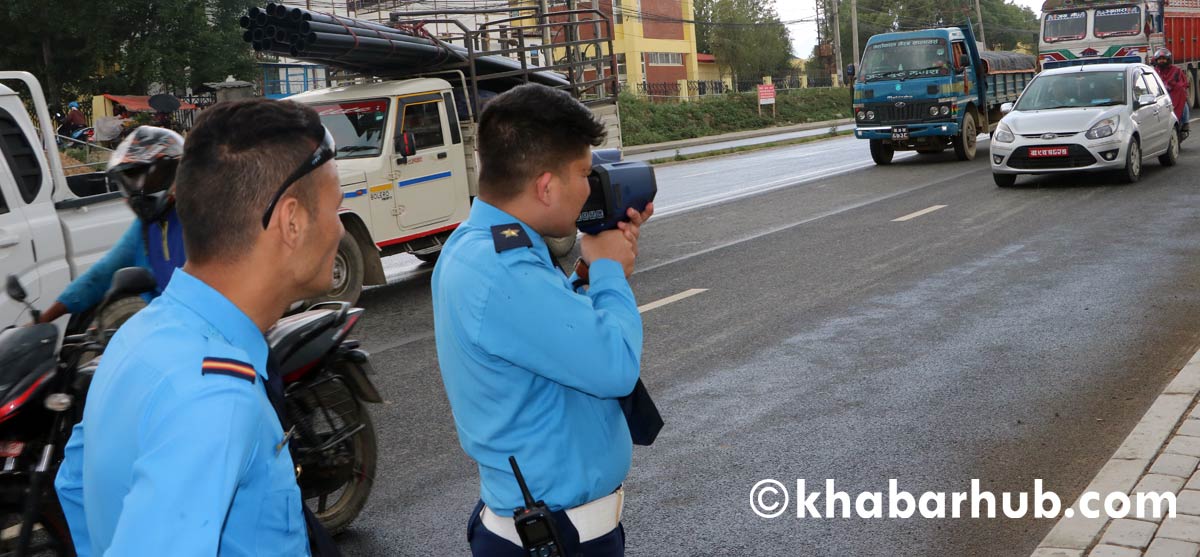KATHMANDU: After the terrible Dhobighat accident of June 2 that killed journalist Gobinda Sharma and pillion rider Chandramani Mudbari, the Metropolitan Traffic Police (MTP) has initiated a campaign at the Koteswor-Kalanki stretch of the Ring Road by using laser speed gun to what it said ‘minimize and control’ the speed of the vehicles plying the ‘expressway’.
Equipped with a laser speed gun, traffic police personnel deployed at the Koteswor-Kalanki section of the road will detect a vehicle’s speed, and take action against disobedient drivers in accordance with the section 164 (6) of the Motor Vehicles and Transport Management Act, 2049. With the new rule in place, a vehicle cannot exceed its speed of 50 Km/hr in the main lane and 20 Km/hr in the service lane. A fine of Rs 500 would be imposed to drivers defying the rule, said SSP Padam Bista at the Metropolitan Traffic Police Division.

“We have introduced the new rule to control the rising trend of accidents in the Kalanki-Koteshwor section of the Ring Road,” Bista informed while justifying the use of laser speed guns.
According to him, initially, they will use three laser speed guns. A laser gun can track the speed of a vehicle up to 150 meters away.
How does a laser speed gun work?
A laser speed gun moves faster than sound (about 984,000,000 feet per second) or roughly 1 foot (30 cm) per nanosecond and measures the round-trip time for light to reach a vehicle and reflect back. It shoots an extremely short burst of infrared laser light, which then waits for it to reflect off the vehicle. The laser speed gun then counts the number of nanoseconds it takes for the round trip. It then divides by 2 and calculates the distance to the vehicle. The accuracy can be very high. The cone of the distance, which is 3 feet in diameter, and allows the gun to target a specific vehicle.








Comment